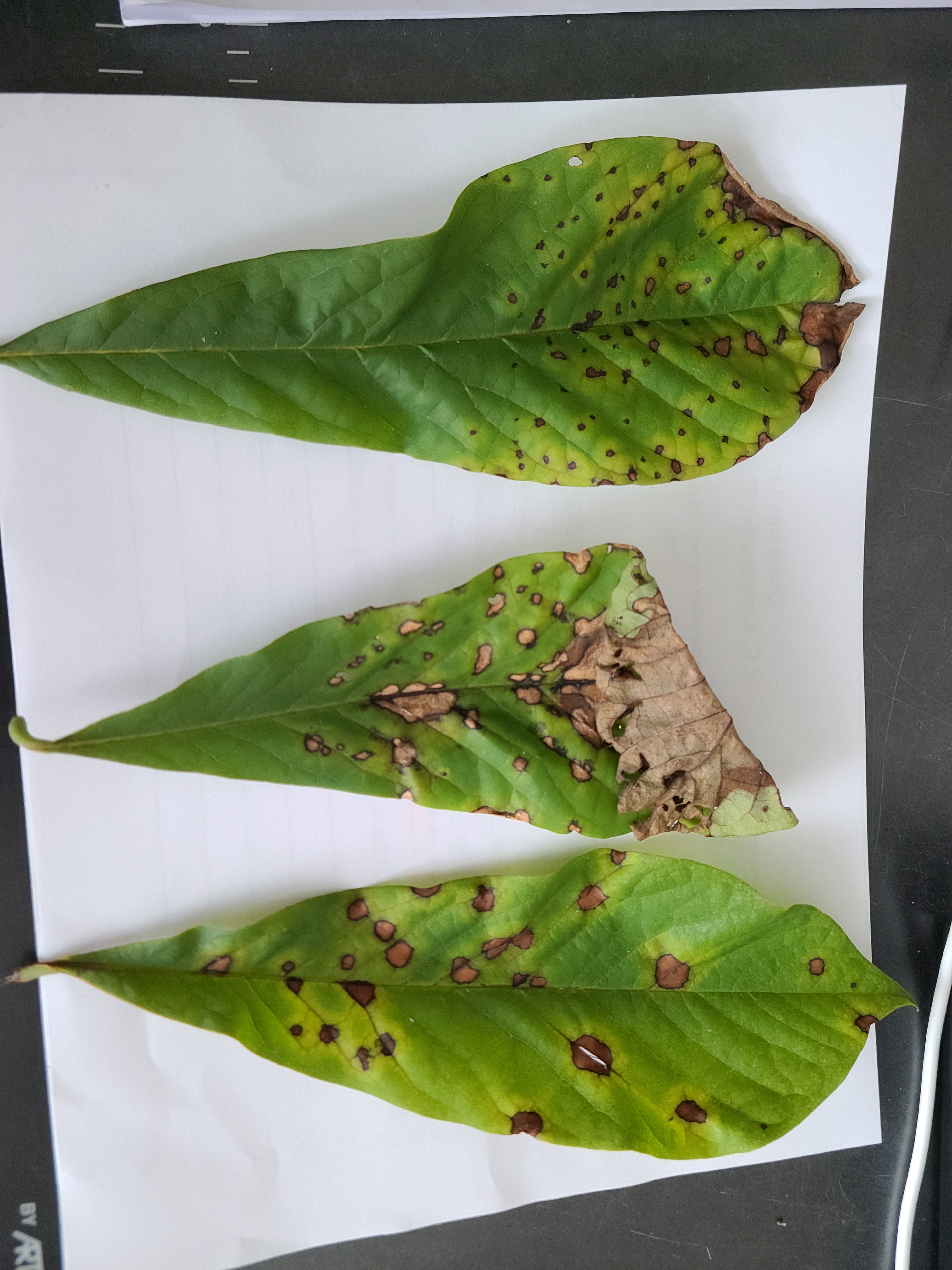Spots on My Leaves: Phyllosticta Species in the Landscape
go.ncsu.edu/readext?942551
en Español / em Português
El inglés es el idioma de control de esta página. En la medida en que haya algún conflicto entre la traducción al inglés y la traducción, el inglés prevalece.
Al hacer clic en el enlace de traducción se activa un servicio de traducción gratuito para convertir la página al español. Al igual que con cualquier traducción por Internet, la conversión no es sensible al contexto y puede que no traduzca el texto en su significado original. NC State Extension no garantiza la exactitud del texto traducido. Por favor, tenga en cuenta que algunas aplicaciones y/o servicios pueden no funcionar como se espera cuando se traducen.
Português
Inglês é o idioma de controle desta página. Na medida que haja algum conflito entre o texto original em Inglês e a tradução, o Inglês prevalece.
Ao clicar no link de tradução, um serviço gratuito de tradução será ativado para converter a página para o Português. Como em qualquer tradução pela internet, a conversão não é sensivel ao contexto e pode não ocorrer a tradução para o significado orginal. O serviço de Extensão da Carolina do Norte (NC State Extension) não garante a exatidão do texto traduzido. Por favor, observe que algumas funções ou serviços podem não funcionar como esperado após a tradução.
English
English is the controlling language of this page. To the extent there is any conflict between the English text and the translation, English controls.
Clicking on the translation link activates a free translation service to convert the page to Spanish. As with any Internet translation, the conversion is not context-sensitive and may not translate the text to its original meaning. NC State Extension does not guarantee the accuracy of the translated text. Please note that some applications and/or services may not function as expected when translated.
Collapse ▲Gardeners and farmers are some of the most astute folks. They pay close attention to the health of their plants and anything out of place raises warnings in their mind. One of the most common and obvious issues plants have are spots on their leaves. A once-pristine leaf changing to anything but green, or whatever color it should be, usually ends up on the desk of the horticulture agent or the Extension Master Gardeners. I had an old, familiar foe arrive this week: Phyllosticta on a paw paw leaf (Asimina triloba).
Phyllosticta’s effect on Plant Health
Phyllosticta species are wide-spread fungal plant pathogens. They cause brown spotting or splotching with a black and/or yellow rim (called necrosis) as they grow. There is usually additional discoloration, depending on the species and the patterning of these blotches can vary across the plant and how bad the infestation is.

Species occur around the world and infect a wide variety of plants. The species of Phyllosticta can be host-specific, like in the case of the Phyllosticta hamamelidis is specific to witchhazel, but also general and cross between species. Even Cacti can become susceptible to them!
Fungi in the Landscape
Fungi are all around us all the time and most are not pathogenic, or cause health issues, to our plants. Fungi are important decomposers in the landscape (you like compost and healthy soil right?), are a food source for many types of organisms, and help move the circle of life along.
Most fungi are opportunists. Cut hay while the sunshines, right? Phyllosticta is most evident after cool, wet winter and spring periods. According to UMass Extension, “The fungus produces tiny, black fruiting bodies within the necrotic tissue and spores are easily disseminated to healthy foliage during wet weather.” If you suspect you have Phyllosticta in your landscape and are concerned for your plant’s health, please contact your local Cooperative Extension Office for a confirmed diagnosis, as there are lots of leaf spot-causing pathogens out there!
What’s to Do
Phyllosticta is taking advantage of cool, wet weather! It only shows up when the weather is ideal for it to grow, so it can be bad one year and not be seen the next year. If you do have Phyllosticta, it is best to remove the leaf litter from beneath the infected plants as the leaves fall. If it is in a large section of the plant, you can cut out the infected area. Do not compost these leaves and debris. If it is a small infestation you can pick the leaves off, and sterilize your tools and hands between treatments. There are chemical options available for treatment of the pathogen. Please contact your local Cooperative Extension Office for a list of control options.
It is important to always remain diligent in your landscape and observe changes in the weather and the health of your plants. Plant health and weather are inextricably linked, and even the most attentive gardeners and farmers doing all the right maintenance practices can be stumped by a change in the weather!




